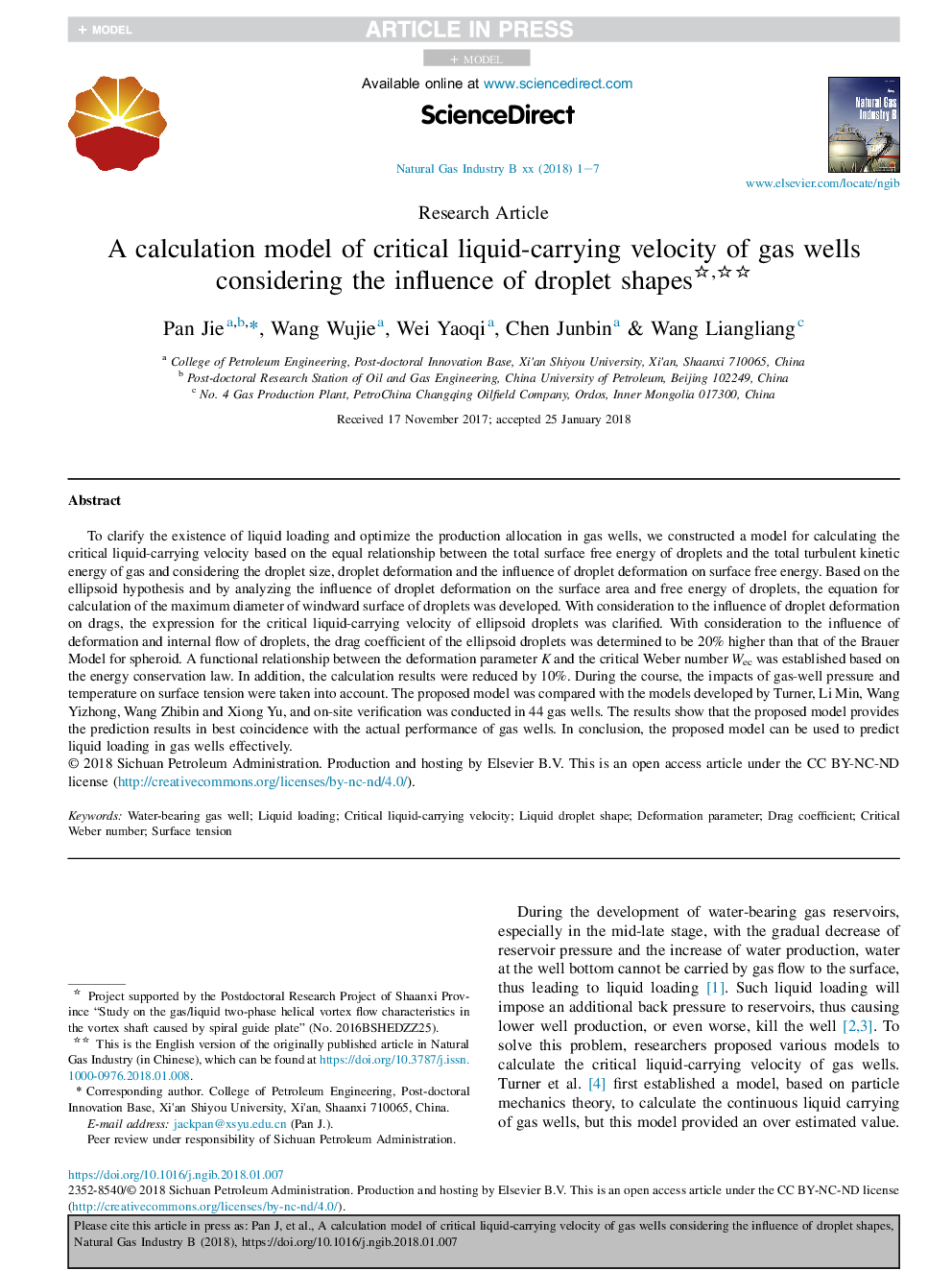| Article ID | Journal | Published Year | Pages | File Type |
|---|---|---|---|---|
| 8948894 | Natural Gas Industry B | 2018 | 7 Pages |
Abstract
To clarify the existence of liquid loading and optimize the production allocation in gas wells, we constructed a model for calculating the critical liquid-carrying velocity based on the equal relationship between the total surface free energy of droplets and the total turbulent kinetic energy of gas and considering the droplet size, droplet deformation and the influence of droplet deformation on surface free energy. Based on the ellipsoid hypothesis and by analyzing the influence of droplet deformation on the surface area and free energy of droplets, the equation for calculation of the maximum diameter of windward surface of droplets was developed. With consideration to the influence of droplet deformation on drags, the expression for the critical liquid-carrying velocity of ellipsoid droplets was clarified. With consideration to the influence of deformation and internal flow of droplets, the drag coefficient of the ellipsoid droplets was determined to be 20% higher than that of the Brauer Model for spheroid. A functional relationship between the deformation parameter K and the critical Weber number Wec was established based on the energy conservation law. In addition, the calculation results were reduced by 10%. During the course, the impacts of gas-well pressure and temperature on surface tension were taken into account. The proposed model was compared with the models developed by Turner, Li Min, Wang Yizhong, Wang Zhibin and Xiong Yu, and on-site verification was conducted in 44 gas wells. The results show that the proposed model provides the prediction results in best coincidence with the actual performance of gas wells. In conclusion, the proposed model can be used to predict liquid loading in gas wells effectively.
Related Topics
Physical Sciences and Engineering
Energy
Energy Engineering and Power Technology
Authors
Jie Pan, Wujie Wang, Yaoqi Wei, Junbin Chen, Liangliang Wang,
